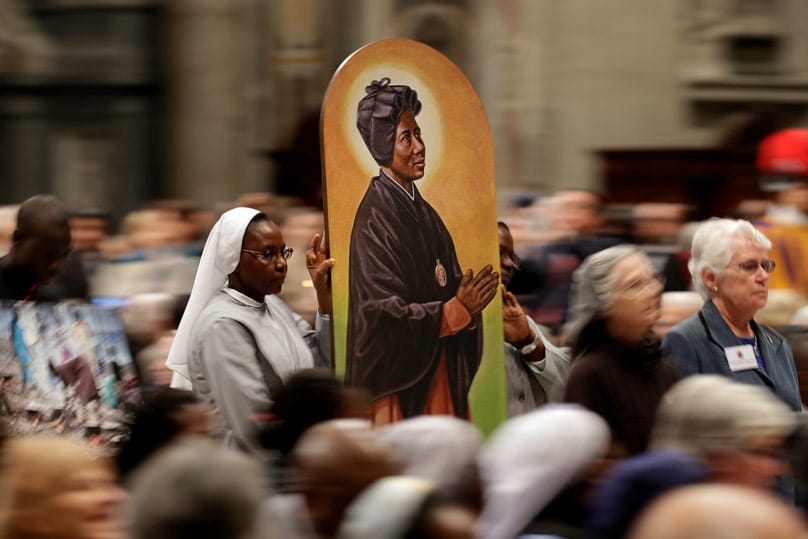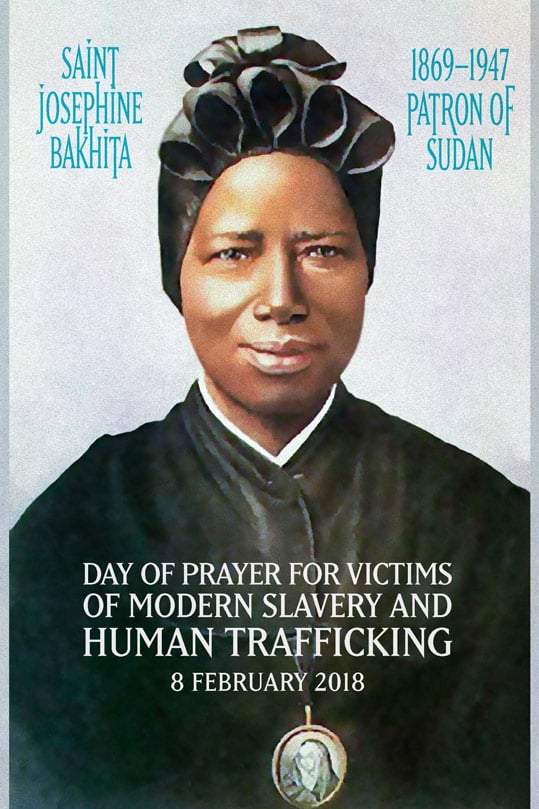
Archbishop Anthony Fisher OP will reveal the Archdiocese of Sydney’s supply chain strategies, education initiatives and welfare services aimed at eliminating modern forms of slavery at a special Mass next month.
The feast day – 8 February – of an African slave St Josephine Bakhita, canonised in 2000, will mark the historic announcement. St Bakhita is the patron saint of Sudan and victims of human trafficking.
Pope Francis also established 8 February as an international day of prayer and awareness of human trafficking in 2015.
Government, civic, community leaders and organisations working to prevent trafficking and support trafficked workers will join members of the Sudanese community at the 5.30pm Mass at St Mary’s Cathedral.
Archbishop Fisher has asked every Sydney parish to mark the day with a Mass and provide resources on how communities, families and individuals can help eliminate Australian goods tainted by modern slavery.
Sydney Catholic Schools will also celebrate St Bakhita’s Day. Last May Archbishop Fisher established the archdiocesan Anti-Slavery Taskforce headed by former Australian Ambassador to the Holy See, John McCarthy QC, after giving evidence to the NSW Legislative Council’s select committee into human trafficking.
He also committed the Archdiocese and its agencies to work to eradicate the problem in Australia.

“All the major Catholic institutions and agencies have come onside and we are genuinely united in this,” taskforce head Mr McCarthy said.
“Sydney Catholic Schools and CatholicCare, for example are prepared to say that we do not want slavery and forced labour in our supply chains and we will do something about it.”
The Archbishop will announce a review of the Archdiocese’s contracts and business practices to ensure it only purchases goods and services from firms that can certify they are slavery-proof.
High risk sectors for slavery and labour exploitation include the service industries, clothing and agriculture.
Mr McCarthy said hopes are high that modern slavery can be erased within a generation, with the Catholic Church in Australia leading the way in international best practice.
Katherine Moloney, the taskforce’s director of research and executive officer, said it is “a privilege to be engaging with the Church and its agencies who have shown incredible willingness [to embrace anti-slavery measures]”.
“The UN’s International Labour Organisation is looking for a gold standard, as well as the European Working Group in the ethical public curriculum and they are seeing some really great standards.
“But the work that we are doing really enhances that significantly, particularly in regards to the compliance due diligence. This is not a matter of ‘Let’s set some lovely inspirational goals’. What often happens is it that the practice doesn’t go down all the tiers of the supply chains. But we will actually verify that this is being done. Our strategy is a robust one.”
There are an estimated 2000-4000 enslaved men, women and children in Australia, including in forced labour or forced marriage, and 40 million worldwide.
Archbishop Fisher said the feast day was the perfect occasion to announce the archdiocese’s commitment.
“St Bakhita’s Day provides an excellent opportunity to highlight the issue of modern slavery and human trafficking…and how the community, families and individuals may, through their prayers and purchases, eliminate from Australia goods tainted by modern slavery,” he said.
Josephine Bakhita was born in Sudan in 1869, kidnapped at the age of nine and held as a slave in Sudan and Italy. After gaining her freedom in the care of Canossian sisters in Venice she forgave her captors, asked for baptism and eventually became a Canossian Sister.
She died on 8 February 1947 and was canonised by John Paul II in 2000.
